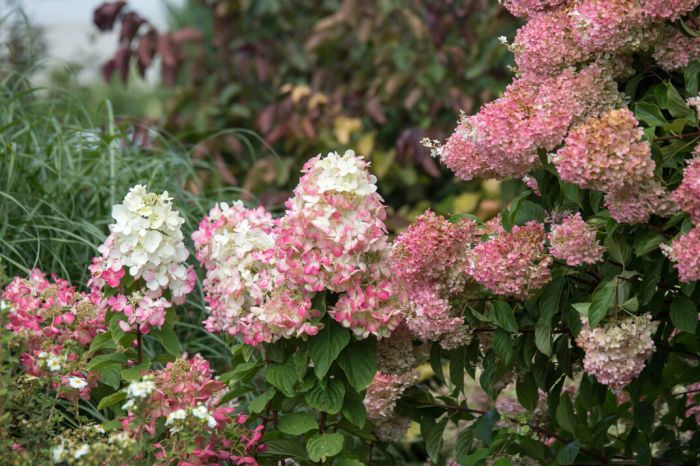Hydrangea, Panicle 'First Editions® Diamond Rouge®'



Out of stock
Coming soon, still growing- Sun Preference
- Full-Sun, No-Sun
- Bloom Time
- July, August, September, October
Description
Diamond Rouge® Panicle Hydrangea has abundant, long lasting, rounded flower heads that start white and progress to pink, intense raspberry red, and finally wine red. Flowers start blooming in July and take on red coloration earlier in the season than other pink panicle hydrangeas, with fall color at its best when night temperatures are 10 degrees cooler than day temperatures. Diamond Rouge® is a mid-size hydrangea, working beautifully as a focal point or small hedge.
Minnesota's Largest Selection of Shrubs
Elevate your landscaping with Gertens' unmatched variety of shrubs! Selecting the right shrubs for your backyard can enhance its beauty and functionality. Consider factors like sunlight, soil type, and mature size when choosing shrubs. For sunny areas, flowering shrubs like roses or hydrangeas can add color and charm. In shady spots, opt for shrubs like azaleas or hostas. Evergreen shrubs provide year-round interest and privacy, while deciduous shrubs offer seasonal color changes. At Gertens, we offer a wide selection of shrubs to suit every backyard need.
Details
Diamond Rouge® Hydrangea | Hydrangea paniculata 'Rendia'
Height: 5 feet
Spread: 4 feet
Sunlight: full sun to full shade
Hardiness Zone: 3b
Other Names: Diamant Rouge Hydrangea
Brand: First Editions
Description:
A showy small shrub valued for its spires of mixed sterile and fertile white flowers that progress to pink, red, then wine red; blooms well in shade; somewhat coarse in appearance, needs slightly acidic well-drained soil
Ornamental Features
Diamond Rouge® Hydrangea features bold conical white flowers with pink overtones at the ends of the branches from early summer to late fall. The flowers are excellent for cutting. It has green deciduous foliage. The pointy leaves do not develop any appreciable fall color.
Landscape Attributes
Diamond Rouge® Hydrangea is a multi-stemmed deciduous shrub with an upright spreading habit of growth. Its relatively coarse texture can be used to stand it apart from other landscape plants with finer foliage.
This shrub will require occasional maintenance and upkeep, and is best pruned in late winter once the threat of extreme cold has passed. It has no significant negative characteristics.
Diamond Rouge® Hydrangea is recommended for the following landscape applications;
- Accent
- Mass Planting
- General Garden Use
Planting & Growing
Diamond Rouge® Hydrangea will grow to be about 5 feet tall at maturity, with a spread of 4 feet. It tends to be a little leggy, with a typical clearance of 2 feet from the ground, and is suitable for planting under power lines. It grows at a medium rate, and under ideal conditions can be expected to live for 40 years or more.
This shrub performs well in both full sun and full shade. It prefers to grow in average to moist conditions, and shouldn't be allowed to dry out. It is not particular as to soil type or pH. It is highly tolerant of urban pollution and will even thrive in inner city environments. Consider applying a thick mulch around the root zone in winter to protect it in exposed locations or colder microclimates. This is a selected variety of a species not originally from North America.
More Information
| Gerten Grown Plants | Gerten Grown Plants |
|---|---|
| Bloom Time | July, August, September, October |
| Sun Preference | Full-Sun, No-Sun |
| Mature Height (Range) | 5 - 10 feet |
| USDA Hardiness Zone | 3, 4, 5, 6, 7, 8 |
| Common Family Name | Hydrangea |


